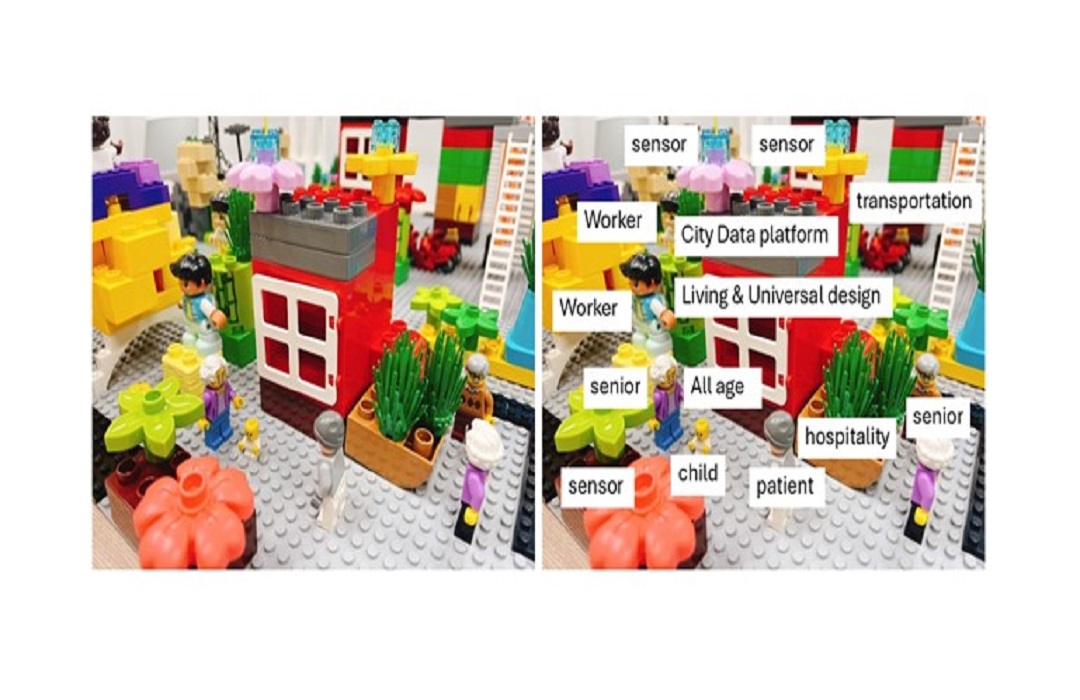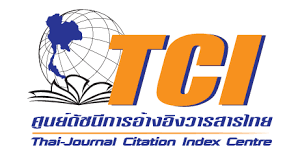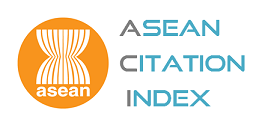The Enhancing System Thinking and Teamwork Through LEGO® SERIOUS PLAY®: a Case Study in Knowledge and Innovation Management
Article 3476
DOI:
https://doi.org/10.69650/ahstr.2025.3476Keywords:
LEGO® SERIOUS PLAY®, System Thinking, Knowledge and Innovation Management, Smart City, Collaborative Problem-SolvingAbstract
This study investigated the application of LEGO® SERIOUS PLAY® (LSP) methodology to enhance learning outcomes in the Knowledge and Innovation Management (KIM) program at Chiang Mai University. LSP is a hands-on, interactive methodology where participants use LEGO® bricks to construct three-dimensional models that visually represent abstract concepts, interdependencies, and dynamic challenges. As a critical component of KIM education, system thinking and teamwork are essential skills for navigating the complexities of interdisciplinary innovation. LSP was integrated into the curriculum to provide students with a tool to construct models that visualize interdependencies within smart cities, bridging theoretical knowledge and practical problem-solving. The study’s findings, derived from pre-session and post-session surveys, peer evaluations, and reflective exercises, demonstrate significant improvements in system thinking, with students adopting holistic perspectives to address dynamic challenges. By fostering engagement, critical thinking, and collaborative learning, LSP proved to be a powerful methodology in interdisciplinary education. Enhanced teamwork skills were also reported as participants engaged in collaborative tasks that emphasized creativity, communication, and shared decision-making. LSP's metaphorical modeling minimized communication barriers, facilitating equitable participation across diverse learner groups. While LSP is not the sole instrument for achieving knowledge and innovation management, it complements other creativity tools and methods by providing an experiential learning approach that bridges theoretical knowledge and practical application. By promoting active engagement and critical thinking, LSP serves as a transformative educational tool for preparing students for innovation-driven environments. Challenges such as initial learning curves and time constraints were identified, with recommendations for session optimization to enhance outcomes. These results underline LSP's potential for broader application across fields that require system-oriented thinking and interdisciplinary collaboration. Future research should explore its scalability and long-term impact on skill development within KIM and related fields.
References
Alzaghou, A. l., & Tovar, E. (2018, April 17-20). Adapting LEGO® SERIOUS PLAY® methodology in higher education. Proceedings of IEEE Global Engineering Education Conference (EDUCON) (pp. 1904-1912). Institute of Electrical and Electronics Engineers. https://doi.org/10.1109/EDUCON.2018.8363468
Caragliu, A., Del Bo, C., & Nijkamp, P. (2011). Smart Cities in Europe. Journal of Urban Technology, 18(2), 65-82. https://doi.org/10.1080/10630732.2011.601117
Cherapanukorn V., & Jintapitak, M. (2017, December 6-8). An organization learning with LEGO® SERIOUS PLAY®. Proceedings of the 11th International Conference on Software Knowledge Information Management and Applications (SKIMA) (pp. 1-8). Institute of Electrical and Electronics Engineers. https://doi.org/10.1109/SKIMA.2017.8294103
Duchek, S., Geithner, S., & Roth, T. (2021). Mastering team crises: a play-oriented approach to foster resilience capabilities in student teams. Teaching in Higher Education, 28, 1937-1956.
Falconer, G., & Mitchell, S. (2012). Smart city framework. Cisco Internet Business Solutions Group (IBSG), 12(9), 2-10.
Flick, U. (2007). Managing quality in qualitative research. SAGE Publications. https://doi.org/10.4135/9781849209441
Gauntlett, D. (2010). Creativity, participation and connectedness: An interview with David Gauntlett. In S. Sonvilla-Weiss (Ed.), Mashup cultures (pp. 65–78). SpringerWein.
Grienitz, V., & Schmid, A. M. (2012). Scenario Workshop for Strategic Management with LEGO® SERIOUS PLAY®. Problems of Management in the 21st Century, 3, 26-34. https://doi.org/10.33225/pmc/12.03.26
Hinthorne, L. L., & Schneider, K. (2012). Playing with purpose: Usingserious play to enhance participatory development communication. International Journal of Communication, 6, 2801-2824.
Jarmai, K., & Vogel-Pöschl, H. C. (2019). Meaningful collaboration for responsible innovation. Journal of Responsible Innovation, 7(1), 138-143. https://doi.org/10.1080/23299460.2019.1633227
Jintapitak, M., & Kamyod, C. (2019, November 24-27). The Purposed Combinational Learning Framework for An Effective and Creative Multi-Business Model and Innovation. Proceedings of the 22nd International Symposium on Wireless Personal Multimedia Communications (WPMC) (pp. 1-5). Institute of Electrical and Electronics Engineers. https://doi.org/10.1109/WPMC48795.2019.9096184
Kaufman, D. B., & Felder, R. M. (2000). Accounting for Individual Effort in Cooperating Learning Teams. Journal of Engineering Education, 89(2), 133-140. https://doi.org/10.1002/j.2168-9830.2000.tb00507.x
Kordova, S., & Frank, M. (2018, December 16-19). The Concept of Systems Thinking Education- Moving from the Parts to the Whole. Proceedings of the IEEE International Conference on Industrial Engineering and Engineering Management (IEEM) (pp. 303-306). Institute of Electrical and Electronics Engineers. https://doi.org/10.1109/IEEM.2018.8607813.
Kozlowski, S. W. J., & Ilgen, D. R. (2006). Enhancing the Effectiveness of Work Groups and Teams. Psychological Science in the Public Interest, 7(3), 77-124. https://doi.org/10.1111/j.1529-1006.2006.00030.x
Kristiansen, P., & Rasmussen, R. (2014). Building a Better Business: Using the LEGO® Serious Play® Method. Hoboken. John Wiley &Sons.
Mccusker, S. (2014). LEGO® SERIOUS PLAY® TM: Thinking About Teaching and Learning. International Journal of Knowledge. Innovation and Entrepreneurship, 2(1), 27-37. http://www.journal.ijkie.org/IJKIE_August2014_SEAN%20MCCUSKERv3.pdf
Nerantzi, C., & Despard, C. S. (2015). Do LEGO® models aid reflection in learning and teaching practice?. Journal of Perspectives in Applied Academic Practice, 2(2), 31–36. https://doi.org/10.14297/jpaap.v2i2.81
Nolan, S. (2010). Physical Metaphorical Modelling with LEGO as a Technology for Collaborative Personalised Learning, Technology-supported Environments for Personalised Learning: Methods and Case Studies. Information Science Reference.
O'Connor, J., & McDermott, I. (1997). The Art of Systems Thinking. Thorsons.
Roos, J., Victor, B., & Statler, M. (2004). Playing seriously with strategy. Long Range Planning, 37, 549–568.
Roos, J., & Victor, B. (2018), "How It All Began: The Origins Of LEGO® Serious Play®", International Journal of Management and Applied Research, 5(4), 326-343. https://doi.org/10.18646/2056.54.18-025
Schulz, K., & Geithner, S. (2013). Creative Tools for Collective Creativity. The Serious Play Method Using Lego Bricks. https://doi.org/10.4324/9780203077351-1
Vanolo, A. (2014). Smartmentality: The Smart City as Disciplinary Strategy. Urban Studies, 51(5), 883-898. https://doi.org/10.1177/0042098013494427

Downloads
Published
License
Copyright (c) 2025 Asian Health, Science and Technology Reports

This work is licensed under a Creative Commons Attribution-NonCommercial 4.0 International License.












